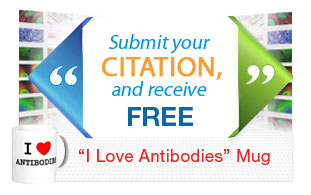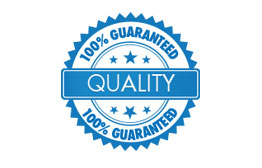UGT2B15 Antibody (Center)
Affinity Purified Rabbit Polyclonal Antibody (Pab)
- SPECIFICATION
- CITATIONS: 1
- PROTOCOLS
- BACKGROUND

Application
| IHC-P, WB, FC, IF, E |
|---|---|
| Primary Accession | P54855 |
| Other Accession | NP_001067.2 |
| Reactivity | Human |
| Host | Rabbit |
| Clonality | Polyclonal |
| Isotype | Rabbit IgG |
| Calculated MW | 61036 Da |
| Antigen Region | 156-185 aa |
| Gene ID | 7366 |
|---|---|
| Other Names | UDP-glucuronosyltransferase 2B15, UDPGT 2B15, HLUG4, UDP-glucuronosyltransferase 2B8, UDPGT 2B8, UDPGTh-3, UGT2B15, UGT2B8 |
| Target/Specificity | This UGT2B15 antibody is generated from rabbits immunized with a KLH conjugated synthetic peptide between 156-185 amino acids from the Central region of human UGT2B15. |
| Dilution | IF~~1:10~50 WB~~1:500 IHC-P~~1:100 FC~~1:10~50 |
| Format | Purified polyclonal antibody supplied in PBS with 0.09% (W/V) sodium azide. This antibody is purified through a protein A column, followed by peptide affinity purification. |
| Storage | Maintain refrigerated at 2-8°C for up to 2 weeks. For long term storage store at -20°C in small aliquots to prevent freeze-thaw cycles. |
| Precautions | UGT2B15 Antibody (Center) is for research use only and not for use in diagnostic or therapeutic procedures. |
| Name | UGT2B15 (HGNC:12546) |
|---|---|
| Function | UDP-glucuronosyltransferase (UGT) that catalyzes phase II biotransformation reactions in which lipophilic substrates are conjugated with glucuronic acid to increase the metabolite's water solubility, thereby facilitating excretion into either the urine or bile (PubMed:16595710, PubMed:18719240, PubMed:23288867, PubMed:7835232, PubMed:9295060). Essential for the elimination and detoxification of drugs, xenobiotics and endogenous compounds (PubMed:7835232). Catalyzes the glucuronidation of endogenous steroid hormones such as androgens (testosterone, androsterone) and estrogens (estradiol, epiestradiol, estriol, catechol estrogens) (PubMed:16595710, PubMed:18719240, PubMed:23288867, PubMed:7835232, PubMed:9295060). Displays glucuronidation activity toward several classes of xenobiotic substrates, including phenolic compounds (eugenol, 4-nitrophenol, 4-hydroxybiphenyl) and phenylpropanoids (naringenin, coumarins) (PubMed:7835232). Catalyzes the glucuronidation of monoterpenoid alcohols such as borneol, menthol and isomenthol, a class of natural compounds used in essential oils (By similarity). |
| Cellular Location | Endoplasmic reticulum membrane; Single-pass membrane protein |
| Tissue Location | Expressed in many tissues. Present in liver, prostate and testis. |

Provided below are standard protocols that you may find useful for product applications.
Background
The UGTs are of major importance in the conjugation and subsequent elimination of potentially toxic xenobiotics and endogenous compounds. UGT2B8 demonstrates reactivity with estriol. See UGT2B4 (MIM 600067).
References
Yong, M., et al. Cancer Epidemiol. Biomarkers Prev. 19(2):537-546(2010)
Sun, C., et al. Hum. Mutat. 31(1):99-107(2010)
Ross, C.J., et al. Nat. Genet. 41(12):1345-1349(2009)
He, X., et al. Br J Clin Pharmacol 68(5):721-730(2009)
Holmes, M.V., et al. PLoS ONE 4 (12), E7960 (2009) :
If you have used an Abcepta product and would like to share how it has performed, please click on the "Submit Review" button and provide the requested information. Our staff will examine and post your review and contact you if needed.
If you have any additional inquiries please email technical services at tech@abcepta.com.















 Foundational characteristics of cancer include proliferation, angiogenesis, migration, evasion of apoptosis, and cellular immortality. Find key markers for these cellular processes and antibodies to detect them.
Foundational characteristics of cancer include proliferation, angiogenesis, migration, evasion of apoptosis, and cellular immortality. Find key markers for these cellular processes and antibodies to detect them. The SUMOplot™ Analysis Program predicts and scores sumoylation sites in your protein. SUMOylation is a post-translational modification involved in various cellular processes, such as nuclear-cytosolic transport, transcriptional regulation, apoptosis, protein stability, response to stress, and progression through the cell cycle.
The SUMOplot™ Analysis Program predicts and scores sumoylation sites in your protein. SUMOylation is a post-translational modification involved in various cellular processes, such as nuclear-cytosolic transport, transcriptional regulation, apoptosis, protein stability, response to stress, and progression through the cell cycle. The Autophagy Receptor Motif Plotter predicts and scores autophagy receptor binding sites in your protein. Identifying proteins connected to this pathway is critical to understanding the role of autophagy in physiological as well as pathological processes such as development, differentiation, neurodegenerative diseases, stress, infection, and cancer.
The Autophagy Receptor Motif Plotter predicts and scores autophagy receptor binding sites in your protein. Identifying proteins connected to this pathway is critical to understanding the role of autophagy in physiological as well as pathological processes such as development, differentiation, neurodegenerative diseases, stress, infection, and cancer.




